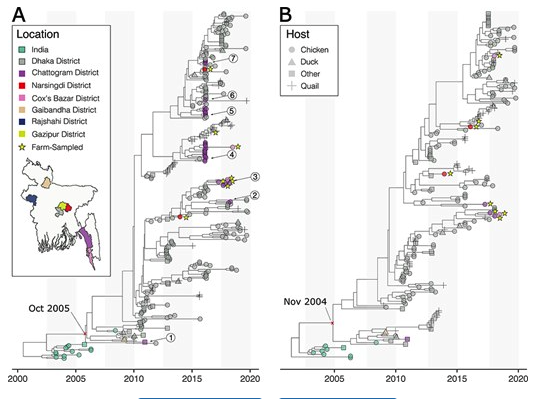


The subtype affects poultry production and poses a potential zoonotic risk. Insufficient understanding of how the poultry trading network shapes the dissemination of avian influenza viruses has hindered the design of targeted interventions to reduce their spread.
Here, we use phylodynamic analyses of haemagglutinin sequences to investigate the spatial spread and dispersal patterns of H9N2 viruses in Bangladesh’s poultry population, focusing on its two largest cities (Dhaka and Chattogram) and their poultry production and distribution networks. Our analyses suggest that H9N2 subtype avian influenza virus lineage movement occurs relatively less frequently between Bangladesh’s two largest cities than within each city. H9N2 viruses detected in single markets are often more closely related to viruses from other markets in the same city than to each other, consistent with close epidemiological connectivity between markets. Our analyses also suggest that H9N2 viruses may spread more frequently between chickens of the three most commonly sold types (sunali—a cross-bred of Fayoumi hen and Rhode Island Red cock, deshi—local indigenous, and exotic broiler) in Dhaka than in Chattogram.
Overall, this study improves our understanding of how Bangladesh’s poultry trading system impacts avian influenza virus spread and should contribute to the design of tailored surveillance that accommodates local heterogeneity in virus dispersal patterns.